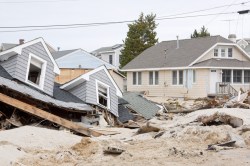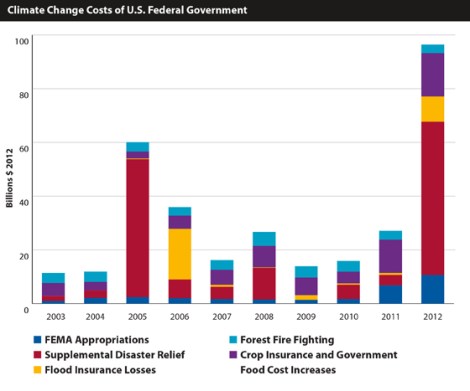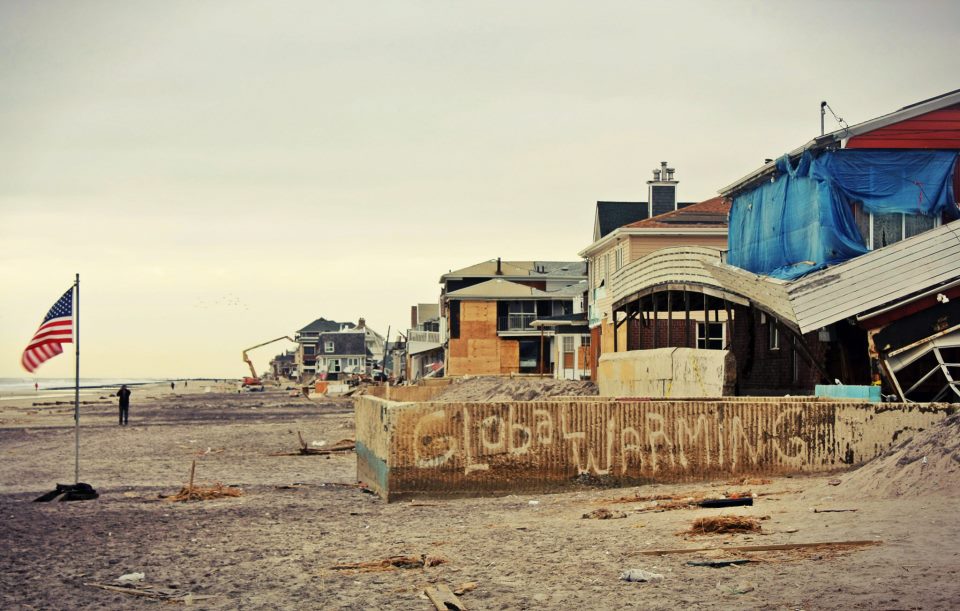
Shutterstock / Glynnis JonesSuperstorm Sandy’s aftermath.
Schools and roads are nice to have. But what American taxpayers are really dropping serious money on, through no direct choice of their own, is cleaning up and helping out after all those climate-related disasters.
A new analysis by the Natural Resources Defense Council shows that the federal government dished out $96 billion last year on what the NRDC calls “federal climate disruption costs.” That works out to $1,100 per taxpayer, or one-sixth of the government’s non-defense related spending. It’s more than the feds spent last year on education or on transportation.
The unwelcome spending spree came during the second most expensive year on record for such disasters. Superstorm Sandy hit last year, as did the drought-induced failures of federally insured crops. Floods and forest fires also racked up sizable bills.
That’s what insurance is for, you say? From an NRDC blog:
Overall the insurance industry estimates that 2012 was the second costliest year in U.S. history for climate-related disasters, with over $139 billion in damages. But private insurers themselves only covered about 25% of these costs ($33 billion), leaving the federal government and its public insurance enterprises to pay for the majority of the remaining claims. As a result, the U.S. government paid more than three times as much as private insurers did for climate-related disasters in 2012.
Here’s a graph from the new report that illustrates the alarming annual disaster outlay:

NRDCClick to embiggen.
The old saying about “an ounce of prevention” comes to mind, but Americans are apparently not heeding it. Again, from the blog:
[F]ederal spending to deal with extreme weather made worse by climate change far exceeded total spending aimed at solving the problem. In fact, it was eight times EPA’s total budget and eight times total spending on energy.
Perhaps we’d be wise to tuck a few dollars away for an extremely rainy, or really, really dry day.



